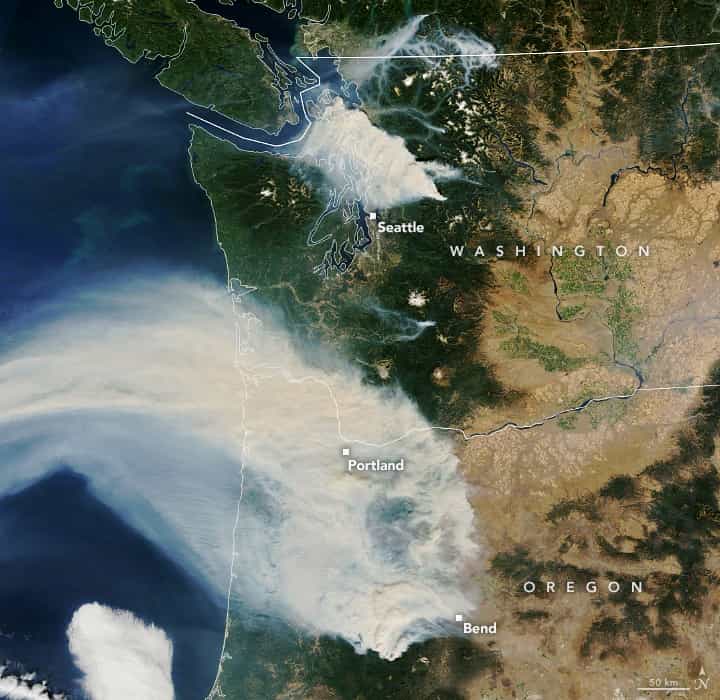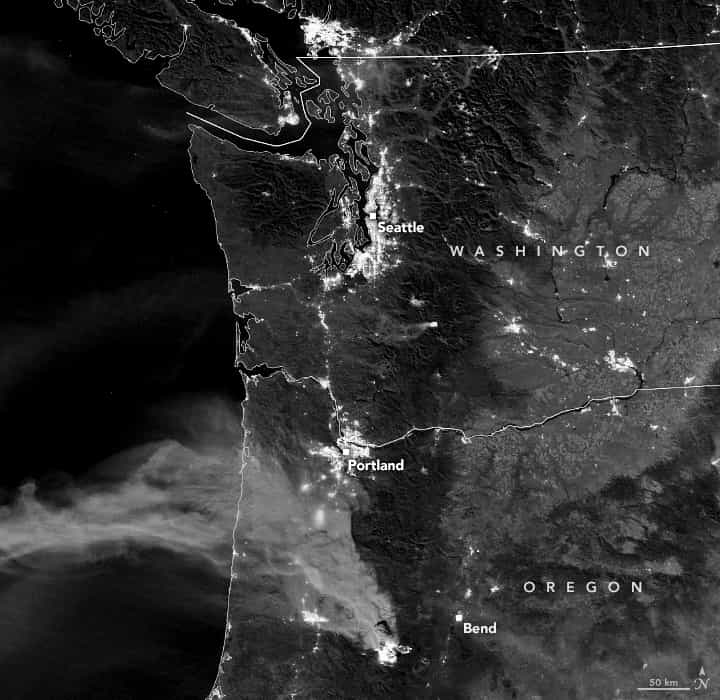
In late summer 2022, nearly 100 large wildland fires burned in the U.S. West. Almost two dozen of those burned Washington and Oregon alone, filling the air with smoke. Plumes from two of the fires on September 10, 2022, were especially pronounced.
The Moderate Resolution Imaging Spectroradiometer (MODIS) on NASA’s Terra satellite acquired image 1 in the late morning on September 10, 2022. Smoke blanketed Puget Sound and wafted out over the Pacific Ocean.
In Washington, the newly ignited Bolt Creek Fire burned in the western foothills of the Cascade Mountains, leading to the evacuation of the town of Index. Strong winds from the east carried smoke toward Seattle, causing poor air quality across parts of western Washington.
In Oregon, the Cedar Creek Fire continued to burn in the Willamette National Forest on the western slopes of the Cascade Range. The smoke also blew north-northwest, turning skies orange in Portland and reducing air quality to “very unhealthy” levels. Some of the smoke, however, rose higher in the atmosphere, where winds carried it toward the east.

The Visible Infrared Imaging Radiometer Suite (VIIRS) on the Suomi-NPP acquired image 2 at 3:20 a.m. local time on September 10. Smoke and the fires were visible via the instrument’s day-night band, which measures nighttime light emissions and reflections. In this case, some of the smoke plumes reflected light from the full Moon.
Note that smoke from Washington’s Bolt Creek Fire is not apparent in this nighttime view. That fire ignited a few hours later and then grew quickly, spreading across 8,000 acres (32 square kilometers) by the afternoon of September 11. On that day, winds shifted direction with the approach of a low-pressure weather system from offshore, clearing some of the low-level smoke from western Washington and Oregon.
This post first appeared on NASA Earth Observatory. NASA Earth Observatory images by Lauren Dauphin, using MODIS data from NASA EOSDIS LANCE and GIBS/Worldview and VIIRS day-night band data from the Suomi National Polar-orbiting Partnership. Story by Kathryn Hansen.